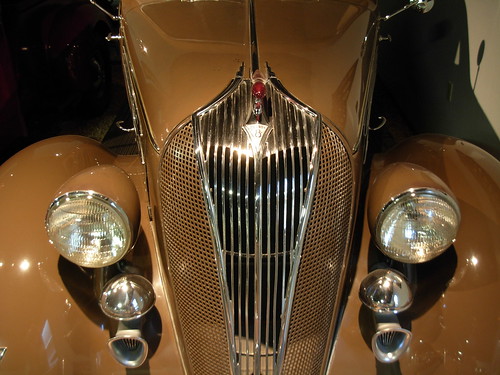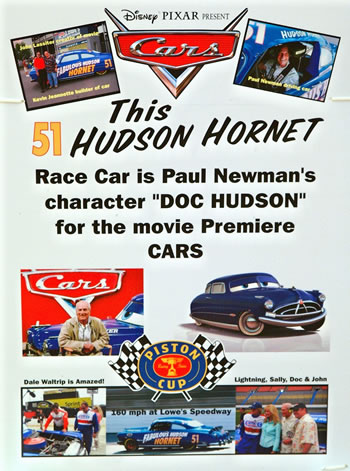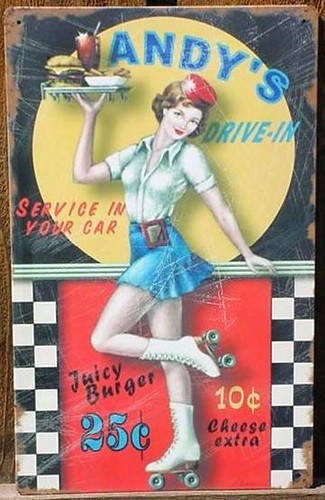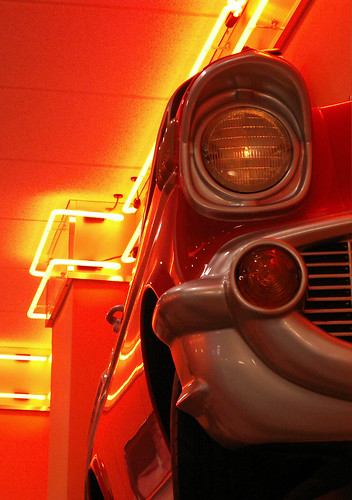HUDSON MOTOR CARS: The Fabulous Hornet!!
By: Mike Marino

Any born and bred blue collar Detroiter, as I am, remembers fondly the Strohs Brewery, Tigers Stadium, Motown Recording Studios and the extravagant Woodward Avenue Thanksgiving Day Parades sponsored by the massive citadel of merchandising, the J.L. Hudson Company. The Motor City had an abundant supply of beer, UAW steel and musical soul. The town also a hotbed hornets nest of Hudson automobiles, including the famous nifty Fifties Hudson Hornet.

The Hornet dominated NASCAR asphalt by stringing up a line of stunning, stinging victories for four years since it was first introduced in 1951.
In 1909 English born heavy metal moneybag, J.L. Hudson funded the manufacture of the car that bore his name with the first Hudson model called simply, the Twenty, began rolling off the assemblylines at the Hudson plant located on Mack and Beaufait on Detroits eastside. The Hudson manufacturing facility moved in 1913 to brand new industrial digs at Jefferson and Conner, not far from the Detroit River. The plant was designed by famed industrial architect Albert Kahn, who was the metal maestro who orchestrated the construction and design of Henry Fords behemoth Highland Park Factory and the Rouge Plant facility. Eventually Hudson would be cranking out internal combustion legends in Belgium, England, Canada, and in the heart of cheeseland in Kenosha, Wisconsin.
It was during the trench and mustard gas warfare during WWI when Hudson began producing it's own superclass of engines in 1916 that was destined to become a Hudson hallmark. It was a true symphony of power called the Super Six that was the first modern lightweight, powerful L-head motor with high compression. This breakthrough followed another one earlier by Hudson, with the development of a Superman sounding concoction called, no, not Kryptonite, but Hudsonite. It was an oil based fluid that provided smooth engagement between the clutch plate and a series of cork discs for it's manual transmissions.
Following the Treaty of Versailles that ended the war of all wars, at least until the next one, Hudson introduced the chutzpah laden and exotically named Essex nameplate in 1919 which was designed to be an el cheapo Hudson to level the economic playing field with it's arch auto rivals, GM and Ford. In the 1930's the Dustbowl Okies hit the road on Route 66 looking for a mother lode on the Mother Road in California, while many in the urban area's were hit between the knees with the collapse of the stockmarket on Black Tuesday in 1929.

Woody Guthrie sang about the woes of the Depression, and it was a time when brother can you spare a dime soup kitchens outnumbered auto dealerships. Hudson entered this spare change fray with the Essex Terraplane model in 1932 complete with christening hoopla of the nameplate by the high flying pride and joy of Atchison, Kansas, aviatrix Amelia Earhart. Like Earhart who disappeared in 1937, the Terraplane vanished a year later in 1938, while the Essex preceded it in death in 1933.The Terraplane model was renamed in 1939 as the Hudson 112.
The war clouds burst again in Europe in 1939 with Germany's attack on Poland in September. The United States didn't flex it's full military muscle until the Land of the Rising Sun attacked Pearl Harbor in December of 1941. This attack not only brought American military might to the table, but also the full force of it's testesterone fueled American industrial empire. Auto manufacturing was put on hiatus from 1942 until the end of the war in 1945, but in the interim they turned their attention to the manufacture of a myriad of munitions and other material to feed the war machine. Tanks rolled out of Detroit plants, while bombers moved out of the huge Willow Run plant near Ann Arbor. Hudson began making anti-aircraft guns to blast the Luftwaffe out of the skies and produced the famed Hudson Invader engine to power the landing craft that stormed the beaches of Normandy on D-Day, June 6, 1944. So in effect, a Hudson was first on the beach to kick off the invasion straight to the strasses of Berlin to bring down the Third Reich! Now that is Hudson power!
Post war innovation in car design took off like a rocket in an age of speed, power and fins. In 1951 Hudson set the racing world on fire with the introduction of the Hornet.

Fiesty and sexy, in an automotive way, it roared and ruled the track for four years and was also a darling of the dragstrips. If you want to wax poetic about the Hornets power plant, it came with a six cylinder, 145 hp engine with 308 cubic inches. Later with the addition of dual carbs, it got a steroid boost to 155 hp. In 1952 Hudson unleashed the 7-X racing engine with 210 hp.
The atomic and jet age led to a penchant for Harley Earl inspired finology for most car designs while Hudson quietly worked on a compact car named the Jet. The company also showed a flair for panache when they teamed up with custom Italian designers to develope and produce the Italia. Only two dozen or so were made and the automotive times they were a changin' and both models were dropped like a hot potato the next year.
The world of design was spinning fast and furious like a planet out of orbit, and Hudson didn't have the resources to keep pace with all the change. So rather than being a nameplate gone in 60 seconds they merged with Nash-Kelvinator in an industrial marriage of proud parentage to give birth to American Motors Corporation in 1954. The company added in the years to come to the pop culture stew with classic names like the "I don't get no respect" Gremlin and my favorite, the magnifico Metropolitan that I had the pleasure of riding in across country from San Francisco to Detroit back in the day.
Hudson manufacturing moved from the Motor City and production of the car was underway in Kenosha, Wisconsin in 1955 until it's final demise in 1957, along with it's stepbrother the natty Nash. There was period of time where the Hudson was really a Nash with the Hudson nameplate and known affectionately as a "Hash", so put that in your pipe and smoke it! It was around this time that AMC debuted the highly popular Rambler. As Rambler sales skyrocketed, Hudson and Nash sales plummeted, and the two nameplates were retired while the Rambler rambled on. It was George Romney, president of AMC and one time governor of the state of Michigan who made the call to close out the two lines. n 1970, nostalgia being what it is, AMC revived the Hornet name with a sporty entry which replaced the Rambler American. American Motors was purchased by Chrysler in the mid-1980's and today that company is Daimler-Chrysler, and the beat goes on.
Tiger Stadium is now in the dugout of history replaced by Comerica Park which casts it's shadow not too far from the empty hulk of Hudsons old department store on Woodward Avenue, now boarded up and a curiosity to a new generation of Detroiters. the old Hudson facility is long gone and torn down, but the Hudson Motor Car legacy lives on.



Classic Cars, Rock n' Roll, Elvis, Drivein Movies & Route 66! Kerouac, The Beats, Haight Ashbury, Easy Rider & Vietnam!

The Roadhead Chronicles goes from the Cold War Fifties Pop Culture of classic cars and rock n' roll to the spaced out Spare Change Sixties of Vietnam and Hells Angels. Not the usual look at the era, instead It's written by someone who lived it and spent a life of being on the road from his beach bum days in Honolulu to the glitz and dangers of the Sunset Strip in LA, and his purple hazed and double dazed days in North Beach and the Haight Ashbury in San Francisco. The Roadhead Chronicles also looks at the history of Route 66, Roadside Neon Culture and old diners and dives!

Mike Marino writes in an offbeat and irreverant style with a beat and a cadence that is all his own. His writing style has been compared to John Dos Passos, John Steinbeck and Terry Southern and one reviewer likened him to Frederick Lewis Allen on acid! Readers and critics call the book "wickedly wonderful", "delightfully weird" and "automotively sexy."!!
